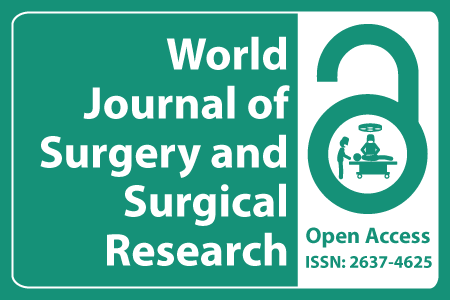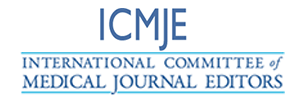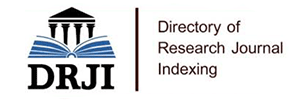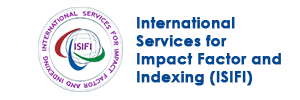
Journal Basic Info
- Impact Factor: 1.989**
- H-Index: 6
- ISSN: 2637-4625
- DOI: 10.25107/2637-4625
Major Scope
- Vascular Surgery
- Cancer Surgery
- Cardiovascular Surgery
- Hepatology
- Laparoscopic Surgery
- Minimal Invasive Surgery
- Trauma Surgery
- Spine Surgery
Abstract
Citation: World J Surg Surg Res. 2023;6(1):1479.DOI: 10.25107/2637-4625.1479
Incidence of Testicular Atrophy Post-Orchidopexy at Sultan Qaboos University Hospital, Oman
Al Hamadani K, Al Wahebi M, Taqi A, AL Gaithi H, Hatem M, Al Sharqi A, AL Hamdani O and AL Balushi Z
Department of Surgery, Khoula Hospital, Oman
*Correspondance to: Khalid Al Hamadani
PDF Full Text Research Article | Open Access
Abstract:
Background: Orchidopexy is the surgical intervention of choice for the correction of congenital undescended testes. This study carried out to determine the incidence of testicular atrophy among patients who underwent orchidopexy in Sultan Qaboos University Hospital from November 2016 to October 2018. Secondary objective was to determine factors leading to development of atrophy post-orchidopexy.
Methods: A prospective longitudinal cohort study conducted from November 2016 to October 2018 at Sultan Qaboos University Hospital (SQUH). Checklist containing information about the pre-operative examination and perioperative factors that could lead to atrophy was filled. Patients were followed-up in the outpatient department during a period of one month to twelve months. Testicular atrophy was defined as more than 50% loss of testicular volume or a postoperative testicular volume less than 25% determined by physical examination.
Results: There were 73 patients included in the data analysis after 14 lost follow-ups. The number of patients with atrophy was 26 (36.0%) compared to 47 (64.0%) with no atrophy. The study showed that development of atrophy occurred within a mean age of 19.62 months compared to a mean age 32.43 months for the normal testis group (p=0.026).
Conclusion: This study has reported a testicular atrophy incidence of 36%. The percentage is higher than what is mentioned in the literature which ranged from 1.83% to 28.1%. The age of patients on operation day represents an inverse relationship with the incidence of developing atrophy. The results thus encourage further research in a better designed study to identify the atrophy rate with a more objective measurement, and to identify possible causes leading to post-orchidopexy testicular atrophy in our center.
Keywords:
#
Cite the Article:
Al Hamadani K, Al Wahebi M, Taqi A, AL Gaithi H, Hatem M, Al Sharqi A, et al. Incidence of Testicular Atrophy Post-Orchidopexy at Sultan Qaboos University Hospital, Oman. World J Surg Surgical Res. 2023; 6: 1479..













